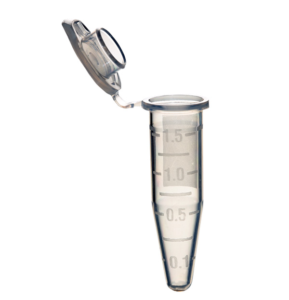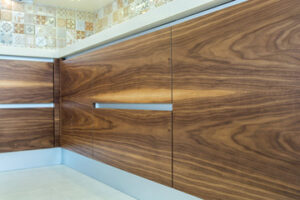Mobile Dent Repair is the process of removing minor dents and dings from a vehicle at your home, work or other convenient location without bringing your car into a body shop. This service is typically offered by skilled technicians with specialized tools.

It’s fast and affordable. There are many benefits of using this type of service. Keep reading the article below to learn more about Mobile Dent Repair.
Dents and dings are a common part of owning a car. Whether from hail or runaway shopping carts, they can damage your vehicle’s appearance and lower its resale value. Traditional repair methods often involve painting and sanding to remove damaged paint, which can take weeks to complete. With mobile dent repair, technicians can repair your minor dents and dings in one to two hours.
The process is quicker and cheaper because there’s no need for paints and fillers that contain toxic chemicals. There’s also no need for curing time, which means your car can be back on the road sooner with less out-of-pocket expense. This makes PDR a smart and environmentally friendly choice for your auto body repair needs.
In most cases, mobile dent repair services offer paintless dent removal (PDR). This is a less invasive repair method that preserves the original factory paint of your vehicle. With traditional repair methods, there’s a risk of color mismatch and overspray that can lower your resale value.
To qualify for paintless dent repair, your dents must be located in an accessible area and not interfere with the integrity of the factory paint. Your technician will use specialized tools to massage and reshape the metal in order to remove the dents. While this is a great option for most damaged cars, it may not be possible in some situations.
The best way to find out if your car can benefit from paintless dent removal is to talk to a local mobile repair service provider. They can assess the damage and provide a quote for your repair.
Aside from repairing dents and dings, mobile dent repair services can also fix other surface imperfections like scratches, swirl marks, or oxidation. They can even repair clear coat scratches as long as the scratches haven’t gone through to the primer or bare metal.
If your car has been damaged, you’ll want to have the repairs done as quickly and efficiently as possible. With mobile dent repair, you can have the repairs completed on your own driveway or at another location that’s convenient for you. It’s a faster, cheaper alternative to traditional auto body repair that can help restore your vehicle’s resale value and give you a smoother ride.
No Waiting Period
If you need your vehicle repaired but have a tight schedule or do not want to be without your car for several days while your repair shop works on it, Mobile Dent Repair is the way to go. This service brings the body work to you so that your car can be driven as normal throughout the repair process. This allows you to get your work done in the middle of the day or on weekends and eliminates the need for a lengthy recovery period that comes with traditional auto body repairs at a body shop.
Mobile dent repair is typically most effective for repairing small to moderate damage, such as shallow dents and creases caused by hail or parking lot mishaps. However, it may be difficult or impossible to perform repairs on a vehicle with severe damage, deep creases, or dents that are located in tight spaces that cannot easily be accessed by the mobile technician. In such cases, the technician may recommend alternate repairs or a visit to a reputable body shop for a full restoration.
When performing PDR, mobile technicians use a light board to better illuminate the damaged area and identify areas of interest. Once they have access to the backside of the dent, they can use tools to massage the dent back into its original shape. The specialized light board helps them determine how to use their tools to get the best results and avoid damaging the vehicle’s paint or components.
Once the technician has finished working on your vehicle, they will put their tools away and you can drive it again. This short wait time gives you the convenience of getting your vehicle repaired and back on the road as quickly as possible. It also eliminates the need for you to pay for costly rental vehicles during your repair process and reduces the overall cost of your repairs.
With a combination of state-of-the-art technologies and blockchain, Dent is reshaping the telecommunications industry and revolutionizing the way mobile data services are sold and bought. The platform allows individuals and telecommunications companies to sell eSIM cards and mobile data services, such as roaming-free calls, on a global peer-to-peer market. In addition, the platform aims to change the way mobile data services are offered and paid for by giving control over pricing to network users.
No Damage to Your Driveway or Garage
Mobile dent repair specialists will take care of all repairs on-site, avoiding the need to drive your car to and from a body shop. This eliminates the risk of future dents or dings caused by driving your vehicle to and from a body shop, and it saves you the cost of gas money. Depending on the extent of your damage, mobile repair services may also be able to fix scratches or other cosmetic damages while they are at your home.
Less Intrusive Repairs
Many mobile dent repair services specialize in paintless dent repair, a technique that keeps your original paint intact and minimizes the risks of color mismatch or overspray. This helps to preserve your resale value and avoids compromising the quality of your vehicle’s finish.
Some traditional repair methods, such as repainting, can decrease resale value. This is because the new paint can crack or chip over time, exposing the metal underneath. However, mobile dent repair services that use paintless techniques can restore your vehicle to its original factory finish and avoid the need for repainting.
Time Savings
Traditional body shops can take days or even weeks to repair your vehicle, whereas mobile dent repair services can typically be completed in just hours. They can also be done at your home or work, allowing you to continue your day without the hassle of finding transportation.
The time it takes for mobile dent repair services to complete repairs on your vehicle depends on the size and severity of the damage, the accessibility of the damaged area, and the specific dent removal methods used. However, most technicians strive to repair vehicles as quickly and efficiently as possible while maintaining high-quality standards.
In addition to their speed and convenience, mobile dent repair services are often cheaper than traditional body shop repairs. This is due to the fact that they do not require expensive space rental or large staff teams. They also utilize less expensive materials than traditional body filler and paint jobs.
Save Money
When it comes to repairing dents on your car, there are a variety of options for you to choose from. One of the most cost-effective options is mobile dent repair. This type of service comes to your home or office, saving you the expense of having to drive your vehicle to a body shop and back again. Additionally, it saves you time by allowing you to continue your day as normal without having to wait around for a technician to pick up and drop off your vehicle.
Another option for repairing minor dents is paintless dent repair (PDR). This non-invasive technique involves massaging the metal from behind the damaged panel to restore it to its original shape. This method is generally less expensive than traditional repair methods, such as sanding, filling and repainting, and is often recommended by insurance companies for eligible claims.
The beauty of PDR is that it allows you to keep your vehicle’s original factory paint intact, which can help preserve its resale value. If you do decide to repaint your car after a repair, however, be sure to choose a professional who specializes in this procedure to ensure that the new color matches the rest of the vehicle’s finish. Otherwise, your resale value could suffer significantly.
PDR is also much faster than traditional repairs. This is because the process involves fewer steps and requires fewer tools. In fact, some dents can be repaired in as little as a few minutes using this method. In comparison, it can take days or even weeks to get your car repaired with traditional methods.
Lastly, when you use a Mobile Dent Repair service, the technicians come to your home or office, reducing your overall costs. This is because they don’t have to pay for space in a body shop or hire additional staff. They are able to pass these savings on to you in the form of lower pricing.
Mobile dent repair is a convenient, cost-effective and environmentally friendly way to fix minor dents on your vehicle. By choosing this service, you’ll be able to get back on the road in no time at all while still having peace of mind that your vehicle’s appearance is protected and that it will maintain its resale value for years to come.




